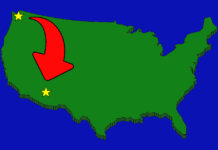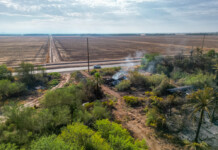
The current exhibit at the Ak-Chin Him-Dak Eco-Museum and Archive is in its final month of showing before it is replaced by a new exhibit April 5.
The museum at 47685 N. Eco-Museum Road in Maricopa opened 23 years ago as a museum for the Ak-Chin Community.
“It’s a museum by its people, for its people and everything in the museum comes from the community,” said Melanie Antone, museum technician. “Unlike most museums, we don’t do fundraising, because the museum is funded through the tribe.”
The museum is free and open to the public 8 a.m. to 5 p.m. Monday through Friday.
On April 5, the museum plans to hold its annual celebration – this year celebrating 23 years since the museum opened – with a new exhibit on “Harrah’s Ak-Chin A Union of Two Communities Celebrating 20 years of Opportunities, Growth and Success.”
The museum changes its exhibits annually.
The Him-Dak Eco-Museum celebration on April 5 will begin at 7:30 a.m. with a fun run/walk starting at the Old Fire Station and ending at the museum. The celebration will include performances by traditional dancers as well as arts, crafts and food vendors and information booths.
The current exhibit titled “Transformation from Past to Present” and “Revisiting the 50s Era within the Community” contains an account of how people lived in the 1950s as told by members of the community.
The information was compiled by museum technicians by a process of interviewing the elders of the community who lived in that era, Antone said.
Elaine Peters, director of the Ak-Chin Him-Dak Eco-Museum, said, “What we do here is important, to continue this understanding of our people – who we are as a people is very important.
“We see what happens around us and it impacts us. We are a part of that, but … it’s important to teach who we are – we are unique in many ways,” Peters said.
The technicians summarized the information they gathered and placed it on story boards, which hang on the wall. The accounts are divided into different aspects of life such as education, religion, sports and housing.
The exhibit includes old photographs taken of people in the community and other items from that era such as an artistic collection of handmade baskets.
The exhibit contains a brief timeline dating from A.D. 300 when the Ak-Chin’s pre-historic ancestors, the Hohokam, lived in the area.
Antone said the Ak-Chin Community is a mixture of the Tohono O'odham and the Gila River people.
The exhibit includes an account of how the community developed its farming enterprise in the 1950s.
Antone said initially the community leased most of its land to non-Indian farmers. Richard Carlyle, a member of the tribe, noticed the people were not making the money they should on the land and that they were leasing the land out at “too cheap a price.”
While the Indians leased the land to the non-Indians, they worked for them clearing ditches. Ultimately, the community created its own farming enterprise to “take back (control) of their land,” she said.
In the 1950s, the children were sent to boarding schools because the community didn’t have its own school system, she said. Some students only saw their parents a few weeks a year because the government offered them jobs in the summer.
In the 1950s, the community participated in baseball tournaments. The tournaments were different than they are today, she said.

![Rizz party organizers say city ‘lying’ One of several flyers for a "TikTok rizz party" is taped to a door in the Maricopa Business Center along Honeycutt Road on April 23, 2024. [Monica D. Spencer]](https://www.inmaricopa.com/wp-content/uploads/2024/04/spencer-042324-tiktok-rizz-party-flyer-web-218x150.jpg)
![Province writer opens the athlete’s mind in new book Tom Schuman, a Province resident, poses with a copy of his new book, "My Wide World of Sports," outside his home on May 2, 2024. [Monica D. Spencer]](https://www.inmaricopa.com/wp-content/uploads/2024/05/spencer-050224-tom-schuman-sports-book-web-01-218x150.jpg)








![Maricopa restaurateur makes Food Network connection [Namkeen Dhaba]](https://www.inmaricopa.com/wp-content/uploads/2024/04/439456716_377105198650519_7536248579664805896_n-218x150.jpg)
![Merging lanes incite more 347 anger A merging lane sign sits on the side of State Route 347 northbound lanes during evening traffic on April 30, 2024. [Monica D. Spencer]](https://www.inmaricopa.com/wp-content/uploads/2024/04/spencer-043024-adot-merging-lanes-347-web-218x150.jpg)
![Rizz party organizers say city ‘lying’ One of several flyers for a "TikTok rizz party" is taped to a door in the Maricopa Business Center along Honeycutt Road on April 23, 2024. [Monica D. Spencer]](https://www.inmaricopa.com/wp-content/uploads/2024/04/spencer-042324-tiktok-rizz-party-flyer-web-100x70.jpg)


